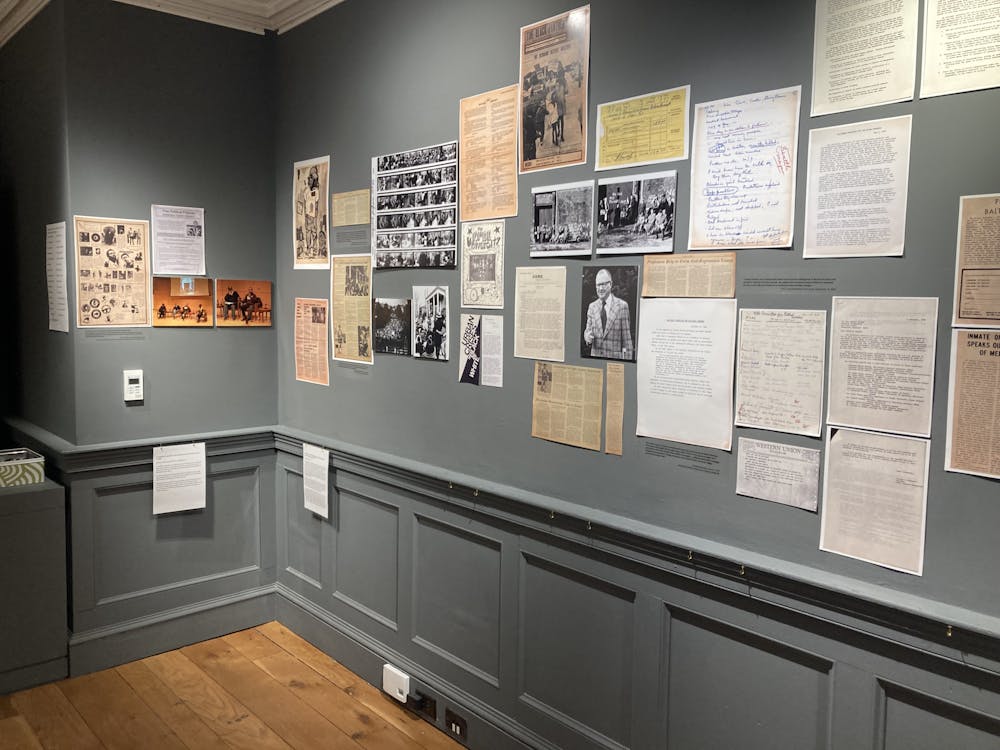On April 20, the Baltimore Museum of Art (BMA) opened an exhibition featuring the Benesch Collection. This series of 10 figure drawings explores artistic approaches on the human figure. Including the works of David Hockney, Willem de Kooning and Robert Rauschenberg, the collection magnifies the radical approach of the 1960s and 1970s on the human figure.
The 10 drawings were selected from the museum’s Thomas E. Benesch Memorial Collection, a collection which includes over 140 different figure drawings that attempt to display the artist’s personal take on the human body. Out of many international artists’ works, those chosen truly explore the varying different takes human beings have on a subject. Ann Shafer, the curator of this exhibit, placed the chosen pieces in the Contemporary wing of the BMA among many other current, modern pieces.
Although this exhibit only features a select number of works, the artists represented are notable in the modern art world. Rauschenberg, an American painter whose ideas influenced pop art, reveals another aspect of his art abilities through the works showcased, including some of his notable drawings, paintings and works of photography.
The art of de Kooning, who was pivotal to the abstract expressionism movement, is also represented in the exhibit. His early Dutch upbringing as well as his participation at the New York School set him apart from his peers. Although de Kooning worked with Pollock and Rothko, his artistic achievements garnered their own acclaim. His drawing displayed in the BMA is certainly worth seeing for its distinct nature. Finally, the English painter and printmaker Hockney (the only living member of the three), brings his own twist to the exhibition. Thus the varying styles of the works, all of which represent the human being, signify the many styles we confront in reality.
When comparing the three main artists, the work of Rauschenberg far surpasses the other two. His unique work with prints and color schemes establishes him as an important figure during the Pop Art movement of the ‘60s. Although his works presented in the BMA are not his best, they do exemplify his talent. Although equally renowned, de Kooning has a different sense of palette and focus.
Furthermore, Rauschenberg has his own entirely unique sense of style. Rauschenberg and de Kooning certainly surpass Hockney in terms of notability and technique, and Hockney is often criticized for his grandeur and brightness. However, being criticized for his occasional gaudiness is also how he has remained relevant and earned a place in the BMA.
Overall, the best aspect of the Benesch collection is the varying nature of the pieces included. Although not nearly as famous as other works, the most striking work is the #14 Artist and Model by Elmer Bischoff. The post-World War II artist started to explore areas other than abstraction and instead began focusing on figurative art. His work shown in the BMA magnifies both the beautiful and flawed of the human body through his dark shading technique and use of sharp lines.
What truly represents the exhibit as a whole is the incorporation of the artist into his own work. The realistic combined with the abstract quality of the works establishes this exhibit as one you cannot miss. The exhibition will remain at the BMA until Sept. 20, 2014.















Please note All comments are eligible for publication in The News-Letter.